A child’s development benefits from creative play because it fosters creativity, innovation, and self-expression. Children are encouraged to use various imaginative materials to explore their inner selves, try out new ideas and concepts, and execute their problem-solving skills.
Math & ELA | PreK To Grade 5
Kids see fun.
You see real learning outcomes.
Watch your kids fall in love with math & reading through our scientifically designed curriculum.
Parents, try for free Teachers, use for free
Creative play nurtures a child’s development and early education. Children are encouraged to use various imaginative materials to explore their inner selves, try out new ideas and concepts, and execute their problem-solving skills. Through artistic, imaginative, musical, construction and dramatic play, children tend to develop crucial abilities like communication, empathy, and decision-making.
“The creation of something new is not accomplished by the intellect but by the play instinct acting from inner necessity. The creative mind plays with the objects it loves.” – Carl Jung.
It lets them spread their wings and their imagination run wild, giving a holistic approach to learning and helping them prepare for future challenges while having fun in the process.
What Is Creative Play?

Creative play definition suggests that it is an imaginative activity where individuals engage in open-ended play to explore and express their creativity, problem-solving skills, and artistic abilities without strict rules or predefined outcomes. This kind of play encourages children to experiment with new concepts, objects, and ideas since it places more emphasis on the process than the outcome.
This is further supported by an article titled “How play helps children’s development” highlights that play is a natural and enjoyable way for children to stay active, healthy, and happy. Through freely chosen play, children can experience healthy development, both physically and mentally, and learn life skills. Providing children with various unstructured play opportunities like drawing, painting, playing with friends, and building blocks from birth until their teenage years is crucial to ensure optimal development.
5 Types Of Creative Play
1. Artistic Play
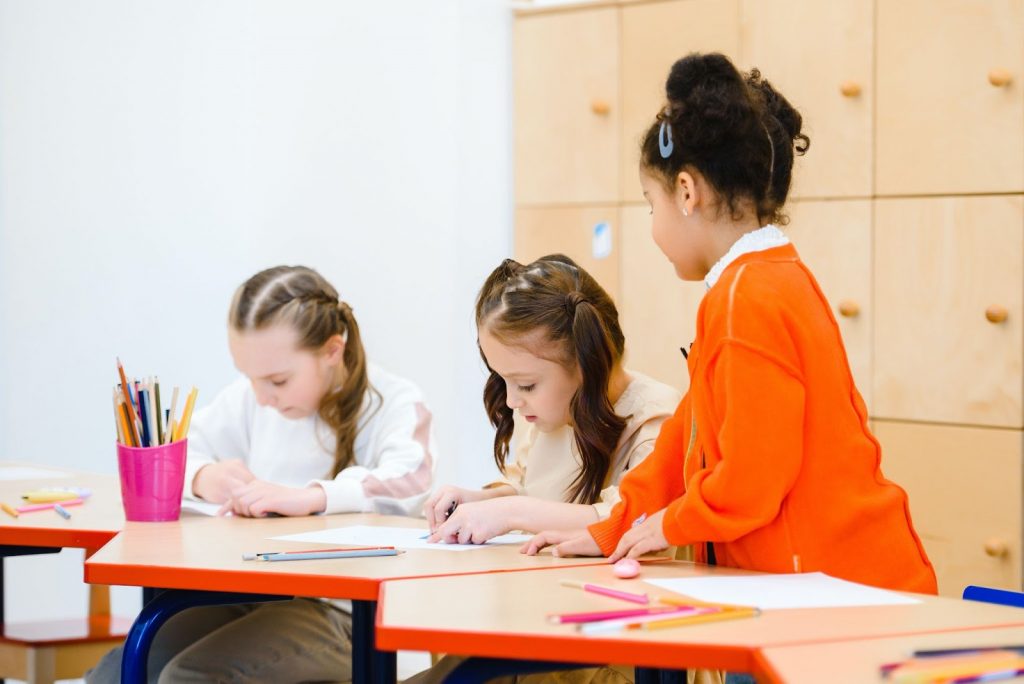
Children who are engaged in artistic play use a variety of creative mediums, including painting, sculpture, and drawing. This way, they can express their creativity by exploring various textures, hues, and materials. It develops their fine motor skills and improves hand-eye coordination. A few more artistic play activities would be finger painting, watercolour painting, coloured pencil or marker drawings, and clay modelling.
Related Reading: Painting Ideas Kids Can Have Fun With & Easily Pull Off
2. Imaginative Play
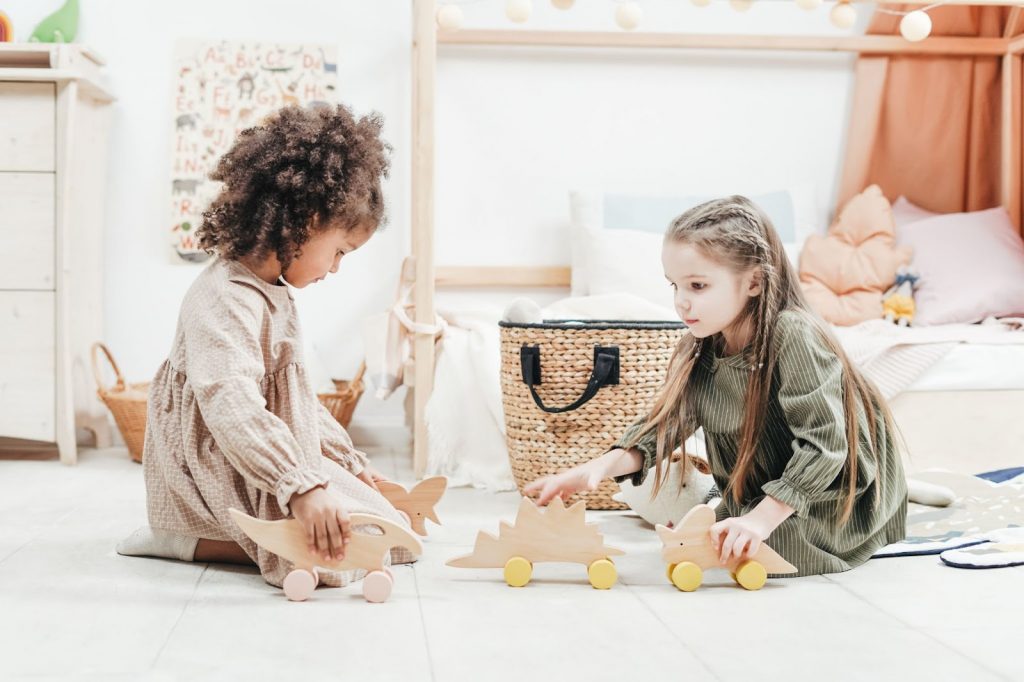
Children engage in imaginative play when they make up and act out various tales, characters, and scenarios. It helps kids think critically and imaginatively, which aids in the development of their problem-solving and critical-thinking skills. For example, playing dress-up, inventing stories, and playing with action figures or dolls.
3. Musical Play

Children that engage in musical play experiment with diverse sounds and music using a variety of musical instruments or even just their voices. Children benefit from this kind of play by improving their coordination, sense of rhythm, and language abilities. The arts of singing, playing the piano or guitar, and dancing are examples of creative play.
Related Reading: Best Dance Songs for Kids to Get Them Grooving
4. Construction Play
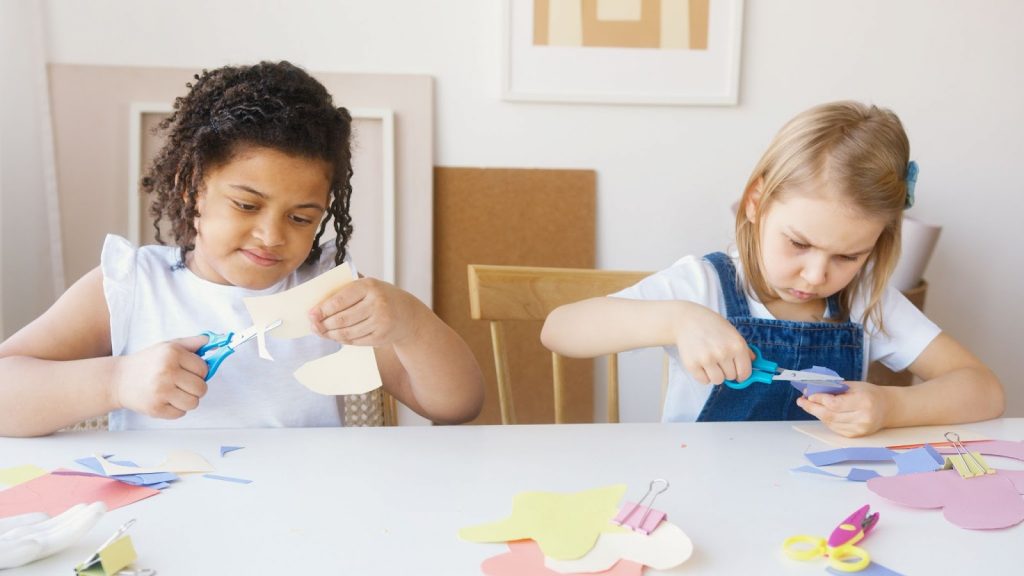
Children build and make things out of different materials, including blocks, Legos, or construction sets. The growth of children’s analytical, problem-solving, and creative skills is supported by this type of play. Construction play includes activities like making elaborate drawings out of building kits or building skyscrapers or other structures out of blocks.
5. Dramatic Play

Children act out various roles and settings in this, which are often based on true events or myths. Playing in this way helps kids develop their empathy, social skills, and linguistic skills. Dramatic play includes pretending to be someone else, such as a doctor or engineer, or staging a play.
The beginning of learning starts with multiple forms, and it is critical to understand how it dramatic play helps in a child’s growth and how it might support their success. Let’s explore the it in more detail.
4 Reasons Why Creative Play is Important
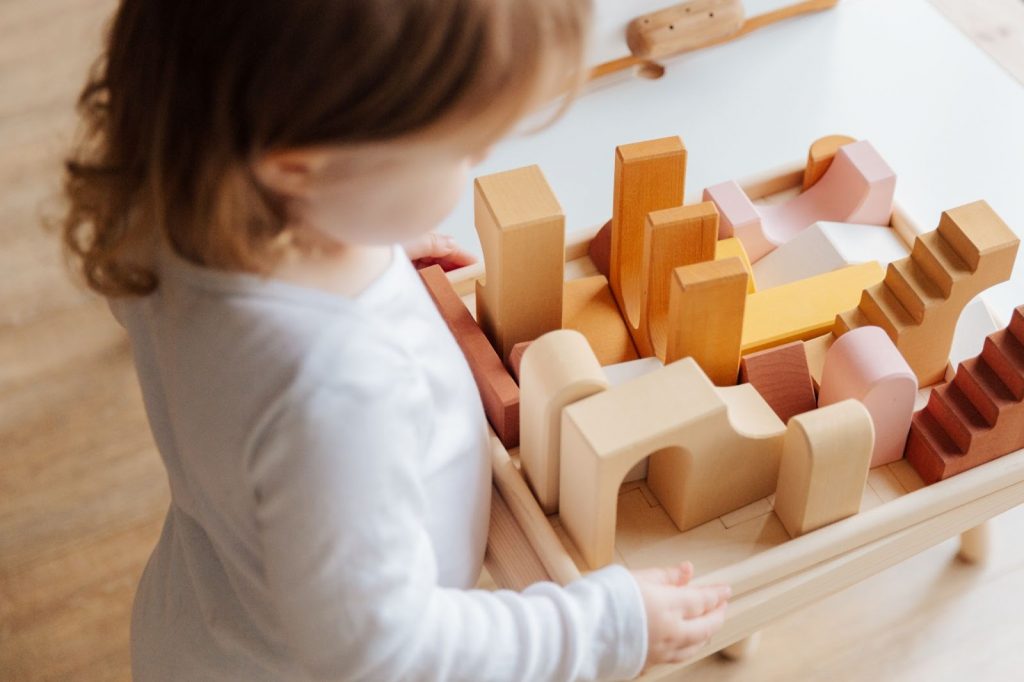
Children benefit a lot from imaginative play because it helps them develop several skills important for their physical and mental growth.
Also, an article published by Science Direct emphasizes that “Play is one of the important components of a child’s life, and it is one of the major activities that promote children’s imagination and creativity.”
The following are the most benefits of creative plays:
- Enhances Imagination and Creativity: Children can use their imaginations to broaden their thinking through creative play, which can eventually lead to the invention of novel and ground-breaking notions. For example, drawing fictional animals, creative landscapes, or moulding clay sculptures. It will help them express what they feel or think about.
- Improves Problem-Solving Abilities: It helps kids develop problem-solving and critical thinking skills.
- Fosters Emotional Development: It helps children develop emotionally and depend on their freedom to explore and express their inner worlds via imaginative play in a supportive and safe environment.
- Improves Social Skills: Children learn vital interpersonal skills, including communication, cooperation, and teamwork, by playing freely with others.
Now that we have a solid understanding of the benefits – let’s explore the kinds of activities most suited to children as per their age.
Related Reading: Interesting Social-Emotional Learning Activities for Classroom
Age-Appropriate Play for Children
Age-appropriate play simply means selecting games that are right for a child’s age and stage of growth. For babies, it could be tummy time and soft toys while toddlers might like simple puzzles and playing with dolls or toy cars. Preschoolers will enjoy playdough and games like hide-and-seek. Older kids will like board games or outdoor sports. Based on their developmental needs, the list of play activities that are appropriate for kids of various ages is provided below.
1. Toddlers (1-3 years)
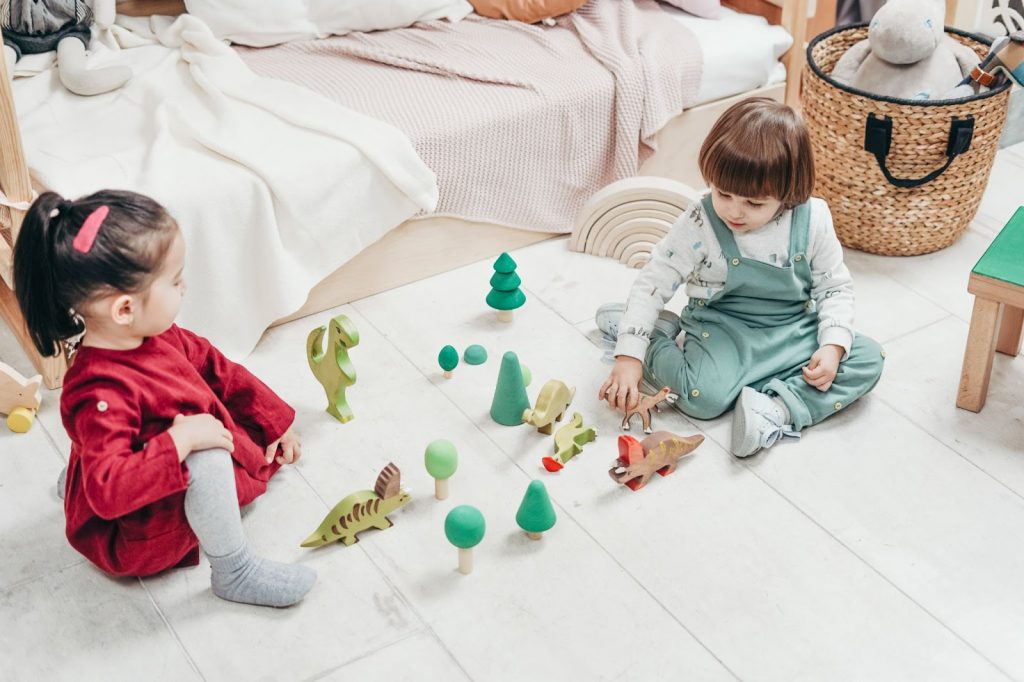
Toddlers learn and grow through fun activities like running, jumping, climbing, and throwing. It helps them move better, enhance their gross motor skills, improve coordination, and build strength. Equally, playing with dolls and toy cars sparks the imagination as well as creativity and lets them make friends by playing together. It’s all about having fun and learning at the same time!
Related Reading: Toddler Activities to Improve Development
2. Preschoolers (3-5 years)
Preschoolers, who belong to the age bracket of 3-5 years, possess an unwavering curiosity about the world around them and demonstrate remarkable imaginative prowess. One effective way of nurturing their creativity and attention to detail is by engaging them in activities such as painting, drawing, and constructing with blocks, which can all serve as valuable conduits for expressing artistic flair. Additionally, engaging in dressing up and outdoor play can stimulate their senses and facilitate their exploration of the world.
Related Reading: Easy Activities for Preschoolers [With Tutorials]
3. School-Age Children (6-12 Years)
School-age children, who typically fall within the range of 6-12 years, it is evident that they have amassed a considerable repertoire of cognitive and social skills, which can be channelled into various creative activities. These activities may include filmmaking, video game playing, and athletics. All of these can refine their mental, emotional, social, and collaborative aptitudes.
Playing with your children in a way that fits your their age is super important because it helps them grow and learn better. Age-appropriate creative play fosters imagination, social skills, and cognitive powers. It also helps in making friends and thinking aptitudes.
You can also help your child be more creative and learn new things while having fun. Here are seven easy ways you can also encourage creative play:
7 Ways To Encourage Creative Play
Encouraging playful and creative learning is fundamental to supporting a child’s imagination, intelligence, and creativity and can be achieved through various techniques. As a parent or teacher, you can explore different avenues to stimulate your child’s artistic side and promote imaginative play.
- Provide open-ended toys: To encourage your child’s creativity, provide toys such as building blocks, art tools, and playdough that may be utilized in various ways.
- Allow unstructured playtime: Allow your child unstructured playtime where they can explore and create without being directed or told what to do.
- Support exploration: Allow your child to explore the world around them by taking them on nature walks or to museums.
- Show interest: To foster creativity and deepen your bond with your child, ask them questions about what they’re working on.
- Limit screen time: Because too much screen time can limit creativity, encourage your youngster to engage in other forms of play.
- Foster a positive environment: Create a safe and positive environment where your child can express themselves without fear of being judged.
- Allow mistakes: Assist your child in learning from their mistakes and encourage them to try again.
Encouraging your children gives them an important tool for growth and self-expression. These easy suggestions will help promote your child’s creativity and start them on the way to a bright and imaginative future. Take a close look at a few activities you can do with your little ones.
20 Creative Play Activities for Kids
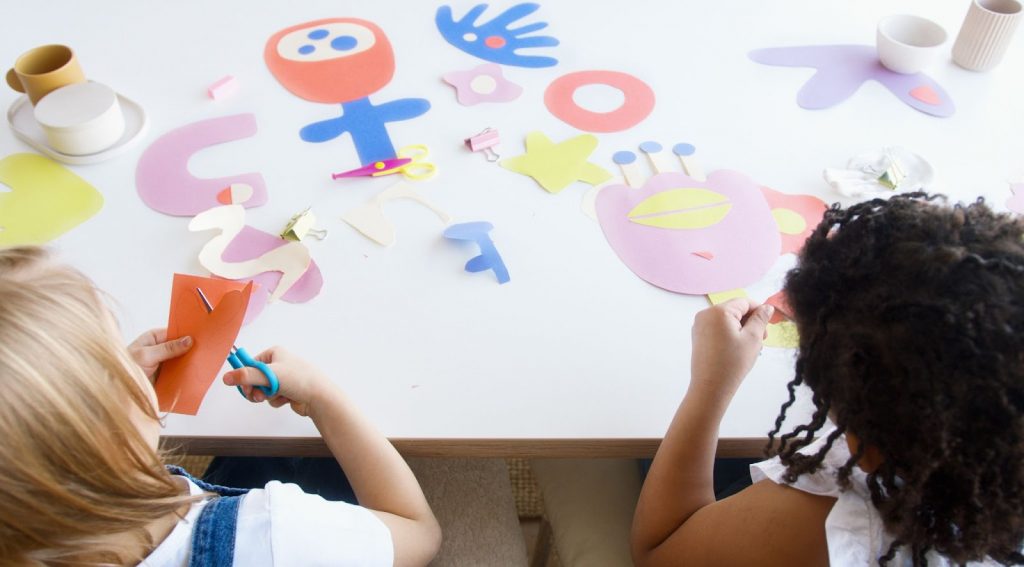
Signe Juhl Møller conducted an experimental study that lasted four months, focusing on preschool children’s play with creative construction and social-fantasy toys. The study found that toys, imagination, and setting all played significant roles in shaping children’s playtime activities. Thus, parents who encourage their children to partake in these activities bestow upon them a valuable tool for self-growth and expression.
“We are never more fully alive, more completely ourselves, or more deeply engrossed in anything than when we are playing.” – Charles Schaefer, American Psychologist.
- Fabricate an art project utilizing recycled materials such as egg cartons, toilet paper rolls, and cereal boxes.
- Assemble a fort or playhouse utilizing blankets, pillows, and chairs.
- Implore the use of dress-up attire and emulate various characters or scenarios.
- Create a board game with paper, markers, and game pieces from scratch.
- Indulge in a scavenger hunt either indoors or outdoors.
- Put on a puppet show featuring sock puppets or paper bag puppets.
- Host a dance party featuring your child’s preferred music.
- Create homemade playdough and sculpt various shapes and figures.
- Cultivate a garden or container garden and observe the plant’s growth.
- Establish a sensory bin with rice, beans, water, and diverse toys or objects.
- Savour a tea party with dolls or plush animals.
- Engage in magnetism and devise designs on a magnetic board or fridge.
- Erect a tower or structure using blocks, Legos, or alternative materials.
- Participate in games such as Simon Says or Red Light, Green Light.
- Plan a cooking or baking activity and concoct a simple recipe together.
- Embark on a nature walk and gather various items, such as pine cones, rocks, and leaves.
- Create an automobile or spaceship out of a cardboard box, and commence a makeshift journey.
- On a hot day, partake in a water balloon or cannon battle.
- Blow bubbles and measure how large the bubbles your child can create become.
- Undertake a science experiment employing household items such as vinegar, baking soda, oil, and water.
Other than providing enjoyment, these various creative-play activities elicit imagination, creativity, and learning. Thus, prepare yourself to relish in the merriment of this experience with your child and observe their intellectual and emotional growth through the conduit of playtime.
Related Reading: Creative Indoor Activities for Kids to Have Some No-Screen Fun
Conclusion
Creative play for kids up a world of unlimited possibilities for children, allowing them to let their imaginations run wild as they learn important life lessons at the same time. These help children develop problem-solving skills, enhance communication skills, and gain confidence in their unique qualities. Parents and teachers must encourage and facilitate a creative and playful learning environment in their children’s lives through art projects, imaginary play, or by building and constructing. Understand what your children need and help them by making learning fun and enjoyable. In no time, you will see your child thrive beyond your imagination.
Related Reading: Best STEM Activities to Spark Innovation & Creativity in Kids
Frequently Asked Questions (FAQs)
Can technology be incorporated into creative play?
Yes, technology can complement creative play when used mindfully, such as using interactive apps or digital tools that encourage artistic expression or collaborative storytelling. However, moderation is essential to maintain a healthy balance with real-world experiences.
Why is creative play so crucial for kids?
It allows kids to build cognitive, emotional, and social skills, as well as helps to spark their imaginations and boosts their language skills. Kids learn to think critically in playful ways while building strong cultural understanding.
How can adults motivate kids to play imaginatively?
Parents can encourage kids to play imaginatively at home by playing or drawing together, reading inspiring storybooks, setting up themed playdates, praising innovative ideas and limiting screen time.
























